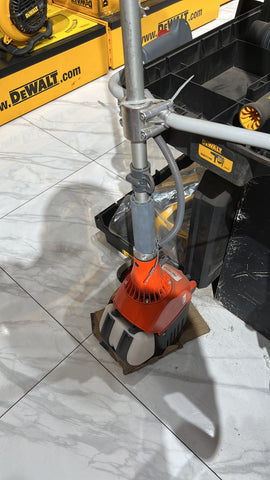When contemplating the purchase of a brush cutter, it is crucial to understand the distinctions between 2-stroke and 4-stroke engine types.
This following information provides a concise comparison of the key differences, similarities, and considerations between 2-stroke and 4-stroke brush cutter engines, helping users understand the characteristics of each type and make informed decisions when selecting equipment for gardening and landscaping needs.

Brush cutters can be powered by various types of engines, each with its own set of characteristics and performance attributes. The two main types of engines used in brush cutters are 2-stroke engines and 4-stroke engines. Here's an overview of each type:-
2-Stroke Engines:
Characteristics:
- Simplicity: 2-stroke engines are simpler in design and construction compared to 4-stroke engines.
- Power-to-Weight Ratio: They tend to be lighter and have a higher power-to-weight ratio, making them more suitable for handheld or portable brush cutters.
- Power Output: 2-stroke engines typically produce more power per engine cycle compared to 4-stroke engines of similar size.
- Mixing Fuel: They require a mixture of oil and gasoline for fuel, usually in a specific ratio.
Advantages:
- High Power Output: 2-stroke engines provide higher power output for their size, making them suitable for cutting through dense vegetation and tough materials.
- Lightweight: They are lighter and more compact, which makes them easier to handle and maneuver.
Disadvantages:
- Fuel Efficiency: Generally less fuel-efficient compared to 4-stroke engines.
- Emissions: Tend to produce more emissions due to the oil-gasoline mixture burning process.
4-Stroke Engines:
Characteristics:
- Fuel System: 4-stroke engines have a separate oil reservoir and use pure gasoline as fuel, eliminating the need for mixing oil and gasoline.
- Fuel Efficiency: They are typically more fuel-efficient compared to 2-stroke engines.
- Smooth Operation: 4-stroke engines operate with a smoother power delivery and less vibration compared to 2-stroke engines.
- Lubrication System: They have a dedicated lubrication system for engine oil, ensuring better lubrication and longevity.
Advantages:
- Fuel Efficiency: 4-stroke engines are generally more fuel-efficient, resulting in longer run times per tank of fuel.
- Lower Emissions: They produce lower emissions compared to 2-stroke engines, making them more environmentally friendly.
- Quieter Operation: 4-stroke engines tend to operate more quietly compared to 2-stroke engines.
Disadvantages:
- Weight: They are heavier and bulkier compared to 2-stroke engines, which can affect maneuverability and portability.
- Complexity: 4-stroke engines are more complex in design and construction, which can lead to higher maintenance requirements.
Comparison:
Similarities:
- Both types of engines power brush cutters and provide the necessary torque and rotational power to operate the cutting attachments.
- They require regular maintenance, including oil changes, filter replacements, and spark plug checks, to ensure optimal performance and longevity.
Differences:
- Fuel Efficiency: 4-stroke engines are generally more fuel-efficient compared to 2-stroke engines.
- Weight and Size: 2-stroke engines are typically lighter and more compact, while 4-stroke engines are heavier and bulkier.
- Emissions: 4-stroke engines produce lower emissions and operate more quietly compared to 2-stroke engines.
- Power Output: 2-stroke engines often provide higher power output per engine cycle compared to 4-stroke engines.
In summary, the choice between a 2-stroke and 4-stroke brush cutter engine depends on factors such as power requirements, fuel efficiency, emissions regulations, and user preferences regarding weight and size.
In conclusion, the choice between a 2-stroke and 4-stroke brush cutter hinges on individual priorities. Those seeking power and simplicity may favor the 2-stroke, while those valuing fuel efficiency and environmental considerations might opt for the 4-stroke.
